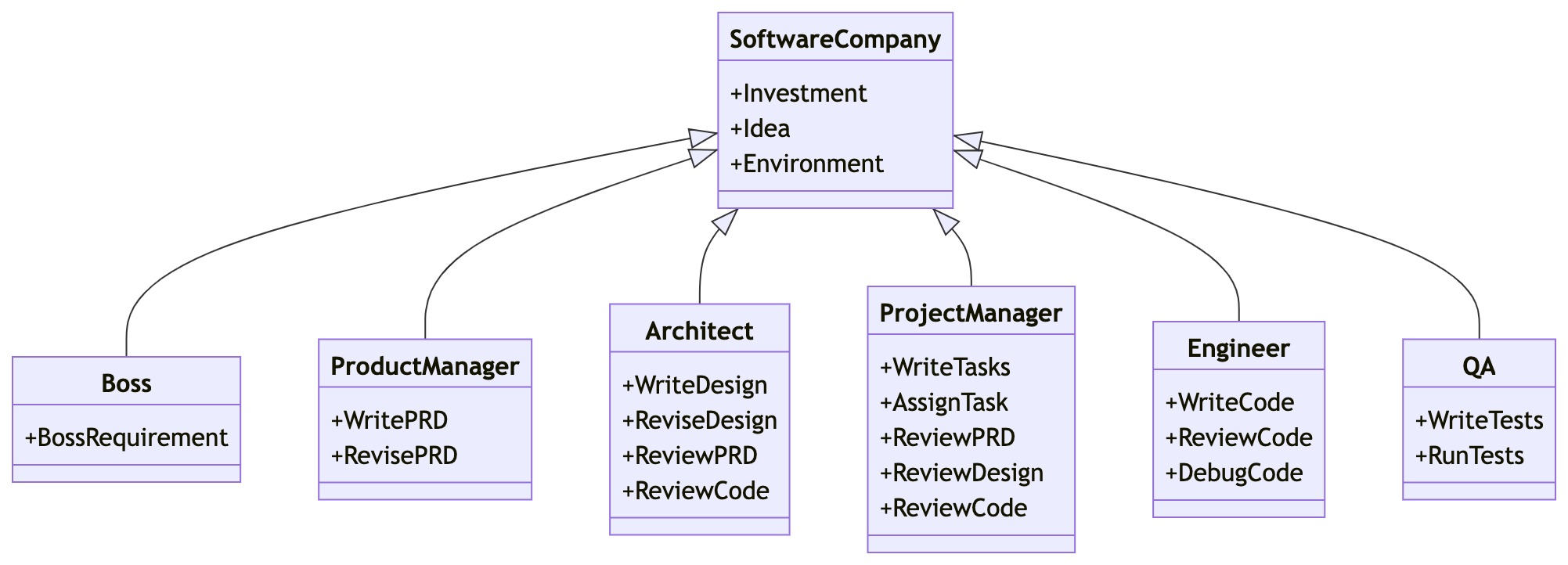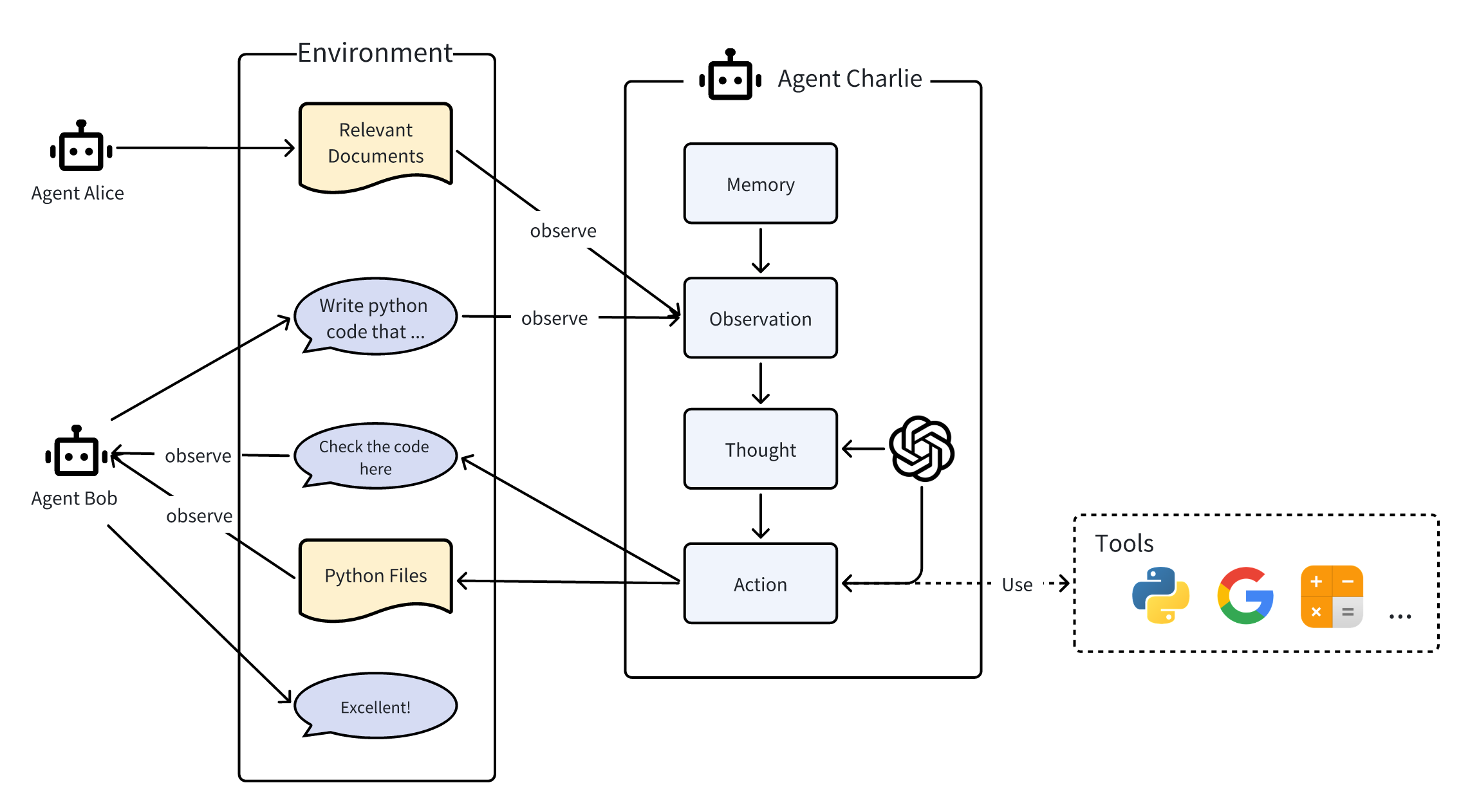- Published on
MetaGPT: A Breakthrough AI Tool for Software Project Management
- Authors

- Name
- caphe.dev
- @caphe_dev

MetaGPT is an open-source artificial intelligence framework developed to address complex issues in project management and software development. By simulating human workflows through specialized AI agents, MetaGPT automates requirement analysis, system design, programming, and testing. This tool is particularly useful in minimizing logical errors and enhancing team collaboration[3][4][8].
Scientific Basis and Practical Applications
Breakthrough research from DeepWisdom and leading universities has demonstrated MetaGPT's capability to encode Standard Operating Procedures (SOPs) into AI systems. The paper "MetaGPT: Meta Programming for A Multi-Agent Collaborative Framework," published at ICLR 2024, shows that this system outperforms conventional GPT-4 by 85.9% in software development tests[4][9]. Real-world applications have proven its ability to generate 20-30% higher quality source code than traditional automation tools[3][8].
System Architecture and Operational Principles
The MetaGPT system operates in a chain model with 5 main roles:
- Analyst processes input requirements and creates technical specification documents.
- System Architect designs class diagrams and user interfaces.
- Developer implements source code based on the design.
- QA Engineer develops automated testing scripts.
- Project Manager oversees progress and allocates resources[3][8].
This process allows for a 40-60% reduction in development time compared to traditional methods while automatically generating detailed technical documentation[4][9].
Agent: The Core Component of MetaGPT
In MetaGPT, an Agent is an intelligent digital entity built from 5 core components:
- Large Language Model (LLM): Acts as the "brain" of the Agent, enabling: Processing and understanding input information, Making context-based decisions, Generating appropriate responses
- Observation Capability: Helps the Agent perceive the environment through: Receiving messages from other Agents, Reading data from various sources, Monitoring changes in the environment
- Thinking: The information processing procedure includes: Analyzing observed data, Combining with experience from memory, Planning the next course of action
- Action: The ability to execute such as: Writing source code through LLM, Using external tools, Interacting with the environment
- Memory: A storage system that helps: Remember previous interactions, Learn from experiences, Improve future decisions
MultiAgent: The Multi-Agent Interaction System
The MultiAgent system in MetaGPT is a complex environment composed of 5 main elements:
- Set of Agents: Multiple specialized Agents: Each Agent has its own role and function, Operates independently but coordinates, Shares common goals
- Common Environment: Interaction space: Where Agents share information, Post work results, Monitor each other's activities
- Standard Operating Procedure (SOP): Standard working framework: Defines roles and responsibilities, Regulates workflows, Ensures system efficiency
- Communication System: Exchange mechanism: Standard message format, Multi-dimensional communication channels, Real-time feedback
- Economic Model: Resource management: Rational task allocation, Prioritizing critical tasks, Optimizing overall performance
Illustration

To illustrate more specifically how AI agents operate within MetaGPT, consider the following example:
In a working environment, three AI agents, Alice, Bob, and Charlie, interact with each other. These agents can post messages or work results to the common environment for other agents to observe.
For example, consider Charlie's workflow (the same process applies to Alice and Bob):
- Charlie is equipped with components: LLM (Large Language Model), observation capability, thinking, and action
- This agent observes documents from Alice and requests from Bob
- Then recalls useful information from memory, thinks about how to write code
- Proceeds to write code and publish the results
When Charlie publishes the work results to the common environment, Bob can respond and evaluate. This process demonstrates how MetaGPT creates a framework that allows AI agents to interact and collaborate effectively.
Benefits and Multi-Industry Applications
MetaGPT has proven effective in various fields:
- Software Development: Automatically creates full-stack web applications in 2-3 hours
- Data Analysis: Processes complex datasets and generates automated reports
- Project Management: Monitors 15-20 tasks simultaneously with real-time risk alerts
- Education: Assists students in building complex graduation projects[3][8]
A real-world example at TechCorp shows that MetaGPT helps reduce logical errors by 70% in the ERP system development project while saving 300 hours of manual work[4][9].
Basic Usage Guide
To get started with MetaGPT:
Install Python 3.8+ and run the command:
pip install metagptInitialize a sample project:
from metagpt.software_company import SoftwareCompany company = SoftwareCompany() company.start_project("Create a task management application")The system will automatically generate:
- Detailed requirement documents
- Database design diagrams
- Backend and frontend source code
- Automated testing scripts[3][7]
Users can track progress through an intuitive web interface and adjust requirements at any time.
Future Development and Community
With over 47,000 stars on GitHub and 5,000+ commits, MetaGPT is becoming the new standard in intelligent software development. The growing user community continuously contributes new modules such as AI support in UI/UX design and ERP system integration[1][2]. Experts predict that this tool will revolutionize the software industry in the next 3-5 years[8][9].
MetaGPT is not just a programming tool but a comprehensive solution for intelligent project management, ushering in a new era of collaboration between humans and AI in solving complex problems.